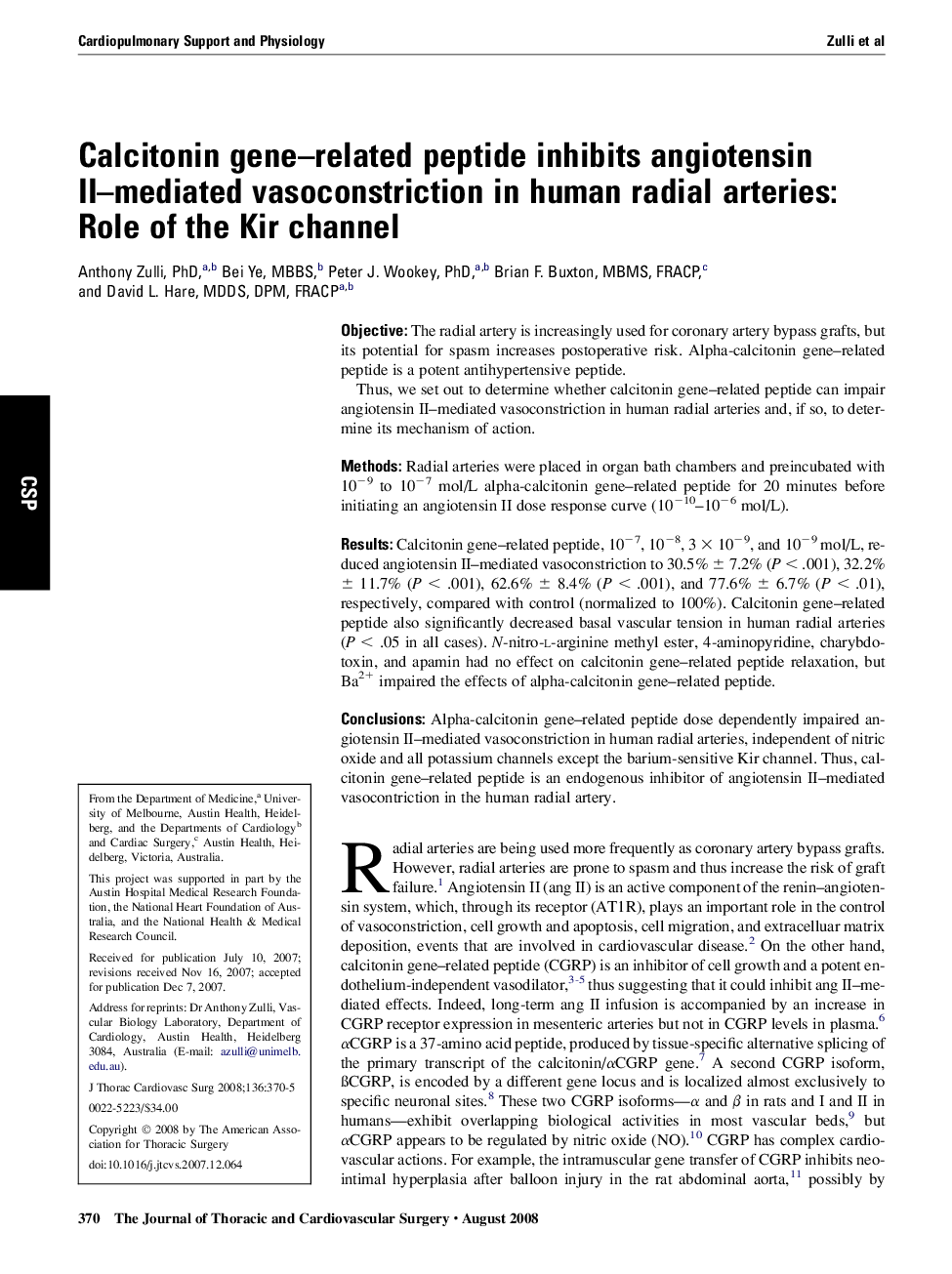| Article ID | Journal | Published Year | Pages | File Type |
|---|---|---|---|---|
| 2983092 | The Journal of Thoracic and Cardiovascular Surgery | 2008 | 6 Pages |
ObjectiveThe radial artery is increasingly used for coronary artery bypass grafts, but its potential for spasm increases postoperative risk. Alpha-calcitonin gene–related peptide is a potent antihypertensive peptide.Thus, we set out to determine whether calcitonin gene–related peptide can impair angiotensin II–mediated vasoconstriction in human radial arteries and, if so, to determine its mechanism of action.MethodsRadial arteries were placed in organ bath chambers and preincubated with 10−9 to 10−7 mol/L alpha-calcitonin gene–related peptide for 20 minutes before initiating an angiotensin II dose response curve (10−10–10−6 mol/L).ResultsCalcitonin gene–related peptide, 10−7, 10−8, 3 × 10−9, and 10−9 mol/L, reduced angiotensin II–mediated vasoconstriction to 30.5% ± 7.2% (P < .001), 32.2% ± 11.7% (P < .001), 62.6% ± 8.4% (P < .001), and 77.6% ± 6.7% (P < .01), respectively, compared with control (normalized to 100%). Calcitonin gene–related peptide also significantly decreased basal vascular tension in human radial arteries (P < .05 in all cases). N-nitro-l-arginine methyl ester, 4-aminopyridine, charybdotoxin, and apamin had no effect on calcitonin gene–related peptide relaxation, but Ba2+ impaired the effects of alpha-calcitonin gene–related peptide.ConclusionsAlpha-calcitonin gene–related peptide dose dependently impaired angiotensin II–mediated vasoconstriction in human radial arteries, independent of nitric oxide and all potassium channels except the barium-sensitive Kir channel. Thus, calcitonin gene–related peptide is an endogenous inhibitor of angiotensin II–mediated vasocontriction in the human radial artery.
